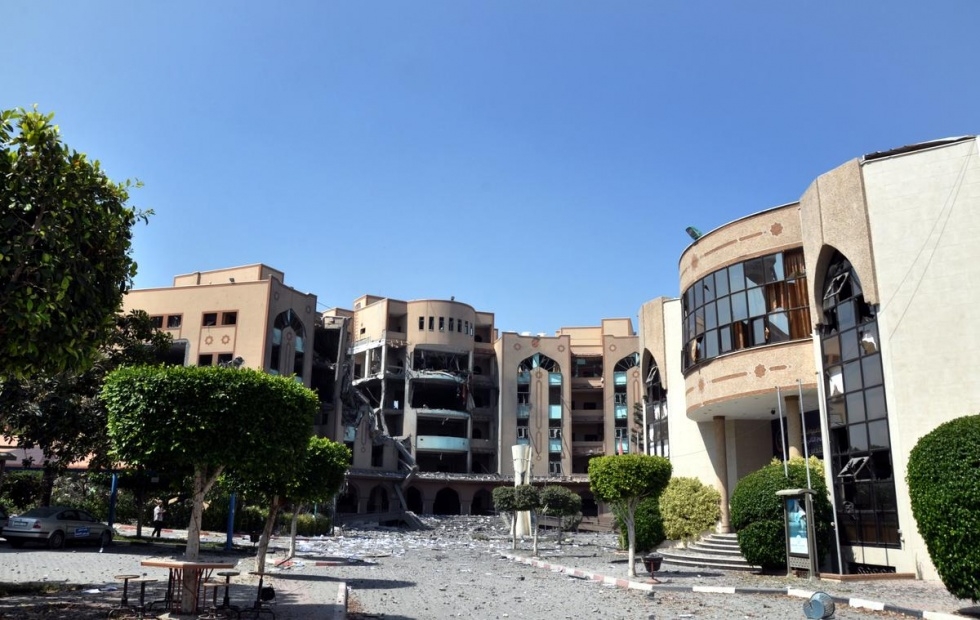Israel's Hannibal Directive kills over 100 in Rafah

The Israeli army is continuing to its bombardment of Rafah city, in the southern Gaza Strip on Saturday, apparently as part of the search for an Israeli officer whom it claims was captured by Palestinian fighters.
Rafah, a town on the border with Egypt and home to the contested border crossing, was subjected to heavy bombing overnight, and rescue operations are ongoing.
Over 100 people have been killed there, and hundreds have been injured, since the breakdown of a planned 72-hour ceasefire, the Guardian reported.
At least 15 people were killed after the bombing of a residential compound in the west of the city run by the United Nations Development Programme to house people displaced during the last conflict in Gaza.
Large Israeli military units are continuing to search for missing Lieutenant Hadar Godin, Israel's army radio reported.
The intensified military activity in the area is thought to be in line with the Israeli army’s directive on dealing with the apparent capture of its soldiers, called the “Hannibal Directive.”
According to the directive, the Israeli army responds to the disappearance of a member of its personnel by bombarding the site of the suspected abduction in order to prevent the captors from fleeing the scene.
The Israeli army implements this policy at the cost of injuring its own forces, as well as the scores of Palestinians who have so far been killed during its intensified shelling of Rafah and Khan Younis.
Earlier on Saturday, army spokesman Moti Almoza was quoted as saying by Israel's Channel 10 that the Israeli military still has no information on the officer's whereabouts.
In a statement issued in the early hours of Saturday morning, Hamas denied having any knowledge of the lieutenant’s whereabouts, saying instead they believe he was killed during a clash with fighters an hour before the 72-hour ceasefire was set to begin.
A 72-hour humanitarian truce in the Gaza Strip that started at 8:00am (0500 GMT) on Friday collapsed when Israeli forces accused Hamas of abducting the officer and killing two others.
However, Hamas issued a statement overnight on Friday claiming that Israel broke the ceasefire before it began by mobilising troops and penetrating up to 2.4 kilometres inside Rafah by 06:30 local time, an hour and a half before the truce was due to come into place.
According to the statement, clashes that broke out between Israeli troops and Hamas fighters began and 07:00, and continued until after the start of the planned ceasefire had begun.
After the failure of Friday’s truce, and as the UNRWA warns that “civilian misery in Gaza is at epic proportions”, international efforts to broker a ceasefire agreement are ongoing.
The Italian Prime Minister Matteo Renzi arrived in Cairo as part of the ceasefire efforts, as Egyptian President Abdel Fattah al-Sisi hailed his country’s truce initiative as a “real chance” to halt the bloodshed in Gaza.
Meanwhile the Israeli army said that seven Palestinian rockets have been intercepted so far on Saturday.
In a Twitter post, the army said two rockets were intercepted by Iron Dome defense system over Tel Aviv in central Israel.
"Another rocket was intercepted over Beersheba," it added.
Two more rockets were also intercepted over Petah Tikva, one over Herzliya and another over Kfar Yona, according to Maariv newspaper.
Earlier on Saturday, the Ezzeddin Qassam Brigades, the armed wing of Palestinian faction Hamas, said that it had fired three rockets at Tel Aviv.
Middle East Eye propose une couverture et une analyse indépendantes et incomparables du Moyen-Orient, de l’Afrique du Nord et d’autres régions du monde. Pour en savoir plus sur la reprise de ce contenu et les frais qui s’appliquent, veuillez remplir ce formulaire [en anglais]. Pour en savoir plus sur MEE, cliquez ici [en anglais].




